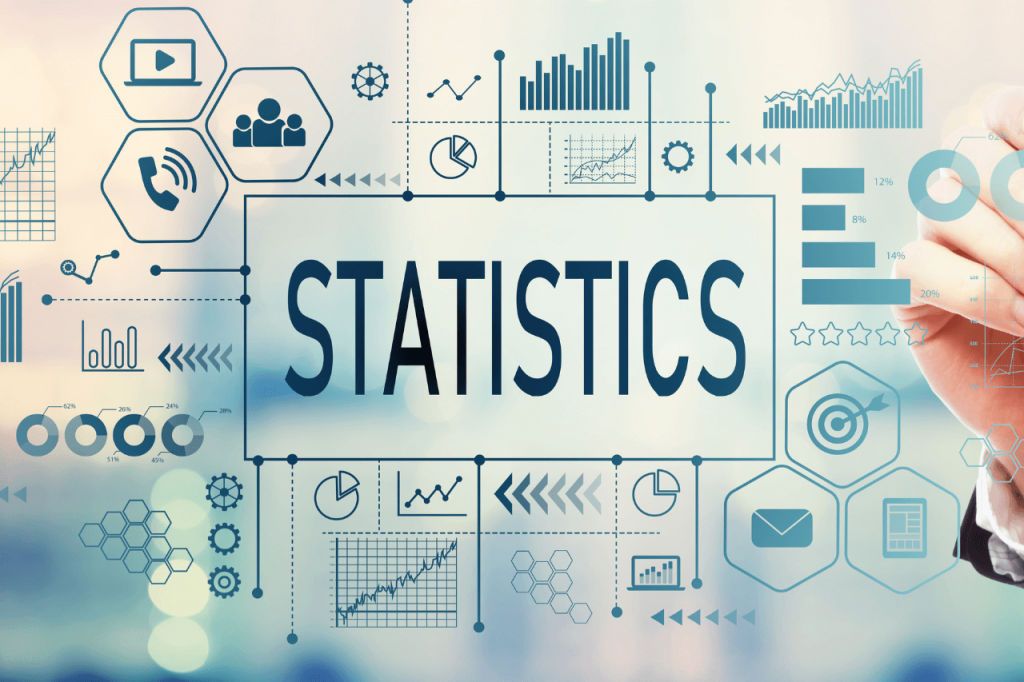IITM-Foundation-Course
Mathematics for Data Science 1
IIT Madras has launched the BS in `Data Science and Applications`. In this program, the course contents are delivered online and can be studied by anyone from anywhere, while the monthly quizzes and final semester exams will have to be attended in-person at designated centres.

Construction of Subsets and set operations
A well-defined collection of distinct objects called elements or members. Learning Outcomes: Write a set in its comprehensive form called set comprehension. Construct different subsets from a given set. Distinguish between closed interval and open interval. Demonstrate the ability to perform operations like union, intersection, set difference, and complement on sets using proper notation. 1️⃣ Set Comprehension: Writing Sets in Comprehensive Form Set comprehension is a way to define a set by describing the properties its members must satisfy instead of listing elements. Notation: $$ A = \{x \mid \text{property of } x\} $$Reads as: “Set $ A $ is the set of all $ x $ such that $ x $ satisfies the property.”

Examples of Set Operations and Counting Problems
A well-defined collection of distinct objects called elements or members. Learning Outcomes: Understand set notations. Solve counting problems using Venn diagrams. Here is a detailed guide covering set notations and solving counting problems using Venn diagrams with 10 examples, including diagrams and emojis to enhance clarity.

Functions
A well-defined collection of distinct objects called elements or members. Learning Outcomes: Define a function, domain, co-domain, and range of a function. Identify the domain and range of a given function. Classify a function as an injective function, a surjective function, both or neither. Define bijection. 1️⃣ Define Function, Domain, Co-domain, and Range Function: A relation $f$ from set $A$ (domain) to set $B$ (co-domain) that assigns each element in $A$ exactly one element in $B$. Denoted as $f: A \to B$. Domain ($A$): The set of input values over which the function is defined. Example: $A = {1,2,3}$. Co-domain ($B$): The set where outputs of the function lie. Example: $B = {a,b,c,d}$. Range: The subset of the co-domain actually mapped by the function. For example, if $f(1) = a, f(2) = b, f(3) = a$, then range $= {a,b}$. Diagram: Function Mapping

English
Active Passive voice
The voice of a verb indicates whether the subject of the sentence performs the action or receives the action. There are two main voices in English:- active and passive.

English
Adjectives
The voice of a verb indicates whether the subject of the sentence performs the action or receives the action. There are two main voices in English:- active and passive.

English
Adverbs
The voice of a verb indicates whether the subject of the sentence performs the action or receives the action. There are two main voices in English:- active and passive.

English
Articles
Articles are a part of determiners that are used before nouns to define nouns or give some information about nouns.

English
Cloze Test
The voice of a verb indicates whether the subject of the sentence performs the action or receives the action. There are two main voices in English:- active and passive.

English
Conjunctions
The voice of a verb indicates whether the subject of the sentence performs the action or receives the action. There are two main voices in English:- active and passive.
Notes
Activity Questions 1.1
“The cafe was like a battleship stripped for action.” The figure of speech used here is ___. Drawing on the information from the sources discussing figures of speech:
Notes
Activity Questions 1.1
1. Below is a list of numbers: 22, -17, 47, -2000, 0, 1, 43, 1729, 6174, -63, 100, 32, -9. How many natural numbers are there in the given list? a) 6 b) 7 c) 8 d) 9 Solution Based on the sources, the set of natural numbers is denoted by N. This set includes 0, 1, 2, 3, 4, 5, and so on. The sources explicitly state that whenever they are talking about natural numbers, it always includes a 0, even though some books may not. Natural numbers are primarily used for counting.
Notes
Essential English Grammar Course
Essential English Grammar Course - Improved Layout & Examples This rewritten course is based on the structure and progression of “Essential Grammar in Use” (4th Edition by Raymond Murphy), but is reorganized for clarity, with enhanced explanations and more practical, modern examples. Each unit includes a concise explanation, clear tables, and sample sentences for real-life situations. Course Structure Part 1: Foundations Unit 1: The Verb “To Be” (am, is, are) Unit 2: Present Simple & Present Continuous Unit 3: Questions & Negatives Unit 4: Nouns, Pronouns, & Possessives Part 2: Tenses Unit 5: Past Simple & Past Continuous Unit 6: Present Perfect & Past Perfect Unit 7: Future Forms (will, going to, present continuous) Part 3: Expanding Sentences Unit 8: Modals (can, could, must, should, might) Unit 9: Articles (a/an, the) Unit 10: Countable & Uncountable Nouns Unit 11: Adjectives & Adverbs Part 4: Sentence Building Unit 12: Word Order & Questions Unit 13: Conjunctions & Clauses Unit 14: Prepositions Part 5: Practical Grammar Unit 15: Passive Voice Unit 16: Reported Speech Unit 17: Gerunds & Infinitives Unit 18: Phrasal Verbs Appendices Irregular Verbs List Spelling Rules Contractions Additional Practice Exercises Part 1: Foundations Unit 1: The Verb “To Be” (am, is, are) Explanation: “To be” is used to describe people, places, things, and feelings.
Notes
Figures of Speech Part - 1
Figures of speech are literary devices that help make language more impactful and impressive. They are used in both spoken and written communication to demonstrate command and control over the language, ultimately adding to your confidence. Here are some of the key figures of speech discussed in the sources: Simile ✨ What it is: A simile is a type of comparison between two completely unassociated things or ideas. How it works: It most commonly uses words like “like” or “as” to draw the comparison. It does not provide a literal interpretation; instead, it creates a vivid picture or emphasizes a quality. Examples: “Oh Oh my love is like a red red rose” 🌹 “I wandered lonely as a cloud” ☁️ “He is as modest as a hermit” 🧘 “A face as dull as lead” 😩 “Eyes as bright as blazing star” ⭐ Metaphor 🖼️
Notes
IIT Madras BS Descriptive Statistics
Certainly! Below is a detailed explanation of the key topics in the IIT Madras BS Descriptive Statistics PDF, presented with examples, questions, and step-by-step solutions in a clear and structured layout[1]. 1. Introduction to Statistics Statistics is the science of collecting, organizing, analyzing, interpreting, and presenting data. Key Concepts Population: All elements of interest (e.g., all houses in Tamil Nadu). Sample: A subset of the population (e.g., 1000 houses from Tamil Nadu). Descriptive Statistics: Summarizing and describing data. Inferential Statistics: Drawing conclusions about a population from sample data. Example: A teacher wants to know the average marks of all students in a school. She collects a sample of students and calculates their average. If she uses this to estimate the school average, she is using inferential statistics.
Notes
IIT Madras BS Probability and Probability Distributions
explain this pdf course with exmaples , questions and their detailed solutions , with ease to understands and with better layout with all steps mentionedCertainly! Below is a clear, step-by-step explanation of the IIT Madras BS Probability and Probability Distributions PDF course, with examples, questions, and detailed solutions for each major topic1. The layout is designed for ease of understanding and covers all essential steps. 1. Data, Statistics, and Probability Key Concepts
IITM-Foundation-Course
Programming in Python
IIT Madras has launched the BS in `Data Science and Applications`. In this program, the course contents are delivered online and can be studied by anyone from anywhere, while the monthly quizzes and final semester exams will have to be attended in-person at designated centres.

Introduction to Google Colab
A well-defined collection of distinct objects called elements or members.
Live Python Tutor Demo
A well-defined collection of distinct objects called elements or members. https://youtu.be/jr9wuxm9kfg
Introduction
A well-defined collection of distinct objects called elements or members. https://youtu.be/8ndsDXohLMQ
Introduction
A well-defined collection of distinct objects called elements or members.
Shortest Paths in Weighted Graphs
A well-defined collection of distinct objects called elements or members. https://youtu.be/4l_g6IQz6Go Learning Outcomes: The student will be able to: the shortest path problems such as single source shortest paths and all pair shortest paths.
Single Source Shortest Paths
A well-defined collection of distinct objects called elements or members. https://youtu.be/XXFcZyP2KlM Learning Outcomes: The students will be able to understand the conceptual numerical on single source shortest paths and Dijkstra’s algorithm.
Single Source Shortest Paths with Negative Weights
A well-defined collection of distinct objects called elements or members. https://youtu.be/FGGMybRD4O4 Learning Outcomes: The students will be able to understand the conceptual numerical on single source shortest paths with negative weights using the Bellman-Ford algorithm.
Transitive Closure
A well-defined collection of distinct objects called elements or members. https://youtu.be/6Ax9K7gSuJE Learning Outcomes: Understand the representation of relationships using graphs. Understand the concept of transitive closure and finding the reachability.
Graded_Assignment_11
A well-defined collection of distinct objects called elements or members. https://youtu.be/934a17SB5NY Learning Outcomes: The student will be able to: find the order of the dependencies using topological sorting.
Revision lecture on Set Theory
A well-defined collection of distinct objects called elements or members. https://youtu.be/n514TARtjyA

IITM-Foundation-Course
English-2
IIT Madras has launched the BS in `Data Science and Applications`. In this program, the course contents are delivered online and can be studied by anyone from anywhere, while the monthly quizzes and final semester exams will have to be attended in-person at designated centres.
IITM-Foundation-Course
Mathematics for Data Science 1
IIT Madras has launched the BS in `Data Science and Applications`. In this program, the course contents are delivered online and can be studied by anyone from anywhere, while the monthly quizzes and final semester exams will have to be attended in-person at designated centres.

IITM-Foundation-Course
Mathematics for Data Science 2
IIT Madras has launched the BS in `Data Science and Applications`. In this program, the course contents are delivered online and can be studied by anyone from anywhere, while the monthly quizzes and final semester exams will have to be attended in-person at designated centres.
IITM-Foundation-Course
Programming in Python
IIT Madras has launched the BS in `Data Science and Applications`. In this program, the course contents are delivered online and can be studied by anyone from anywhere, while the monthly quizzes and final semester exams will have to be attended in-person at designated centres.

IITM-Foundation-Course
Statistics II
IIT Madras has launched the BS in `Data Science and Applications`. In this program, the course contents are delivered online and can be studied by anyone from anywhere, while the monthly quizzes and final semester exams will have to be attended in-person at designated centres.



